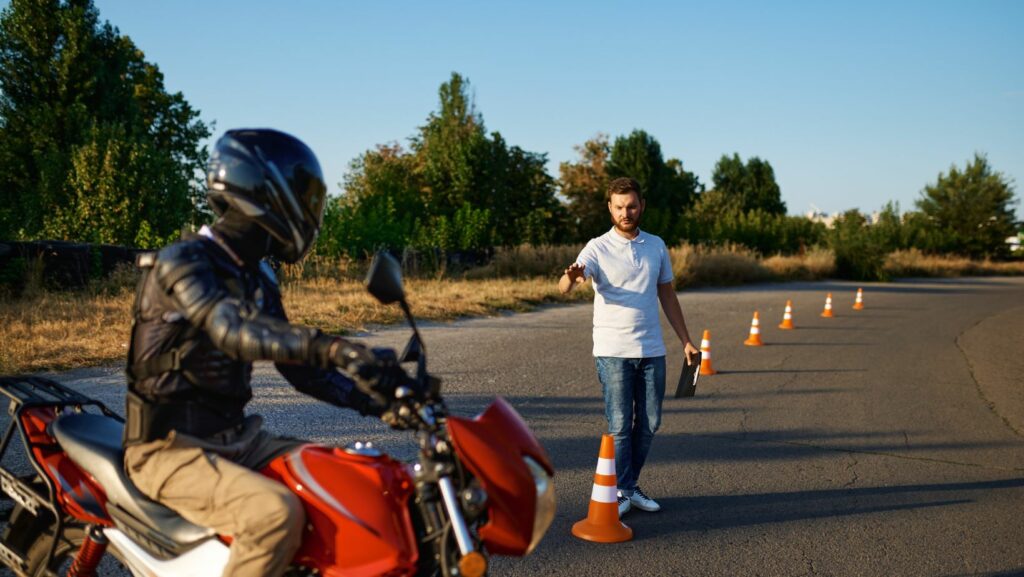
Steps For Obtaining Your Motorcycle License: Prior to Receiving Your Motorcycle License You Must
Before you can hit the open road on your motorcycle, there is an important step you must take: obtaining your motorcycle license. This crucial document not only ensures your safety but also ensures that you are legally allowed to operate a motorcycle. Whether you are a seasoned rider or a complete beginner, obtaining your motorcycle license is a necessary requirement that you cannot overlook.
Obtaining your motorcycle license involves a series of steps and requirements that vary from state to state. These steps typically include completing a motorcycle safety course, passing a written exam, and demonstrating your riding skills in a practical test. It is important to familiarize yourself with your state’s specific requirements to ensure a smooth and successful licensing process. By following these steps, you can confidently embark on your motorcycle adventures knowing that you have met all the necessary legal and safety requirements.
Prior to Receiving Your Motorcycle License You Must
Prior to receiving your motorcycle license, there are several important steps that you must complete. These steps are designed to ensure that you have the knowledge and skills necessary to safely operate a motorcycle on the road. By following these requirements, you can help contribute to the overall safety of the motorcycle community. Here are the key things you must do before receiving your motorcycle license:
- Complete a Motorcycle Safety Course: Many states require individuals to complete a motorcycle safety course before they can obtain their motorcycle license. These courses provide valuable instruction on safe riding techniques, traffic laws, and defensive riding strategies. They typically consist of both classroom instruction and hands-on riding practice. Successfully completing a motorcycle safety course not only helps you gain the necessary skills, but it may also provide you with a waiver for the on-road skills test.
- Pass a Written Exam: In addition to completing a motorcycle safety course, you will likely need to pass a written exam to demonstrate your knowledge of motorcycle laws, regulations, and safety practices. This exam will test your understanding of topics such as helmet laws, lane positioning, and proper signaling. It is important to study and prepare for this exam to ensure that you pass and move forward in the licensing process.
By completing these steps and meeting the requirements set forth by your state, you will be well on your way to receiving your motorcycle license. Remember, obtaining a motorcycle license is not only a legal requirement, but it also ensures that you have the skills and knowledge needed to safely enjoy the freedom of riding

Understanding the Requirements
Age Requirement
One of the key requirements for obtaining a motorcycle license is meeting the age requirement. The specific age varies from state to state, so it is important to familiarize yourself with your state’s regulations. In some states, you may be eligible for a motorcycle license as early as 16 years old, while in others, the minimum age requirement may be 18 or even higher. Keep in mind that meeting the age requirement is essential before you can proceed with the licensing process.
Knowledge Test
Another important step in obtaining your motorcycle license is passing the knowledge test. This test assesses your understanding of motorcycle laws, rules of the road, and safe riding practices. It covers a range of topics, including traffic signs, road markings, and defensive driving techniques. To prepare for the knowledge test, you can study the motorcycle operator manual provided by your state’s Department of Motor Vehicles (DMV). It is crucial to thoroughly evaluate the material and ensure you have a solid grasp of the information before taking the test.
Skills Test
In addition to the knowledge test, you will also need to pass a skills test to demonstrate your ability to safely operate a motorcycle. This test typically takes place on a closed course and assesses your riding skills, including your ability to maneuver, control, and respond to various riding situations. The skills test may involve tasks such as starting and stopping smoothly, turning, shifting gears, and executing quick stops. It is important to practice and hone your riding skills before taking the skills test to increase your chances of success.
In conclusion obtaining your motorcycle license requires completing a safety course, passing a written exam, and demonstrating riding skills in a practical test. It’s crucial to familiarize yourself with your state’s specific requirements and prepare accordingly. By meeting these requirements, you ensure the safety of yourself and others on the road.





